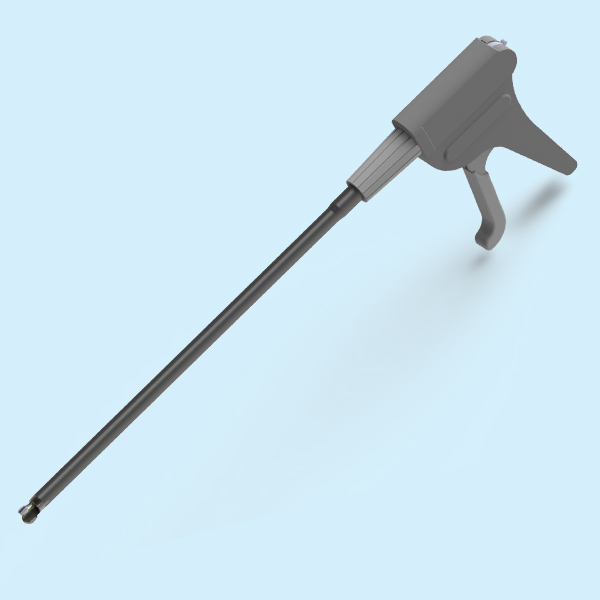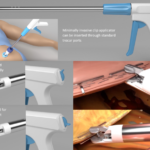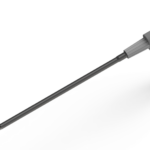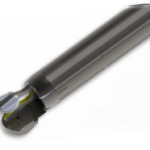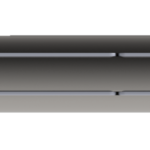This technology relates to a new minimally invasive surgical instrument – a rotative surgical clip and applicator that allows the clamping of large anatomical areas for use in minimally invasive surgery.
Proposed use
- Surgical device for minimally invasive surgery: (for example: bariatric surgery, benign upper GI surgery, hepatobiliary surgery, colorectal surgery, thoracic surgery)
- Reinforcement of staple line
- Closure of enterotomy
- Control of vascular/biliary pedicles
- Facilitate retraction of large organs
Problem addressed
Laparoscopic surgery often requires folds of tissue to be clamped together to occlude the flow of blood or other fluids through anatomical lumens – but existing clip applicators are not designed to achieve this, and can only deploy clips of limited width.
The tissues are held together by surgical clips which are deployed through the jaw of an applicator. The clip applicators contain a magazine of surgical clips that can be fired in succession. A conventional laparoscopic clip applicator system deploys a clip that has a standard profile with a nominal width of only 1mm. Although these surgical clips are ideal for ligating tubular structures, they are not designed to compress significant areas of tissue. In addition, when conventional clips are loaded into the jaw (which is longitudinal to the shaft of the instrument) it imposes a limit on the width of the clip to fit within the cross sectional footprint of the clip applicator. These challenges have been addressed by this innovative Wide Clip Applicator that will enhance the functionality of the laparoscopic clip with greater performance in tissue compression.
Technology overview
Key features of the Wide Clip and Applicator include:
- The elongated clip with multiple bracings to allow for a greater degree of clamping force to be exerted on to the tissue being clamped together
- The clip is single-braced with a T profile for large-area clamping of surgical anatomy
- The bracing is aligned with the centreline of the clip applicator
- The clip applicator is specifically designed using spring-loaded jaws and a tendon-based system to rotate the clip within the abdomen
- Clips demonstrated superior clamping force and increased burst pressure resistance to standard ligation clips in ex vivo testing
An additional consideration of a rotatable clipping system is the need for features that not only retain the clips in the jaws of the device but that also allow torque to be transmitted to the clip in order for it to be rotated in a controlled manner. This design features improved clip retention, and ensures that the clip deforms in a controlled manner and it remains parallel under deformation. Plus, the design also allows the use of clips of variable lengths to support a variety of minimally invasive surgical procedures.
Benefits
- Enables the clamping of large anatomical area during minimally invasive surgery
- The design of the clip applicator facilitates rotative movement inside the body
- The elongated design of the clip ensures low deformity during clamping
Development Stage
- 2nd prototype with improved functionality
- Initial ex vivo characterisation of the clips has been performed
Images
- The Wide Clip Applicator can be inserted through standard trocar ports.
- A render of the Wide Clip Applicator
- A close-up view of the spring-loaded jaws of the applicator
- A render showing the arm of the clip applicator and the tendon system that enables the clip to be rotated inside the body
Watch the technology in action
Intellectual property information
An International PCT application (WO2018/069690) has been filed to protect the novel surgical clip and the applicator. The application is currently in national phase prosecution in the US and Europe.
